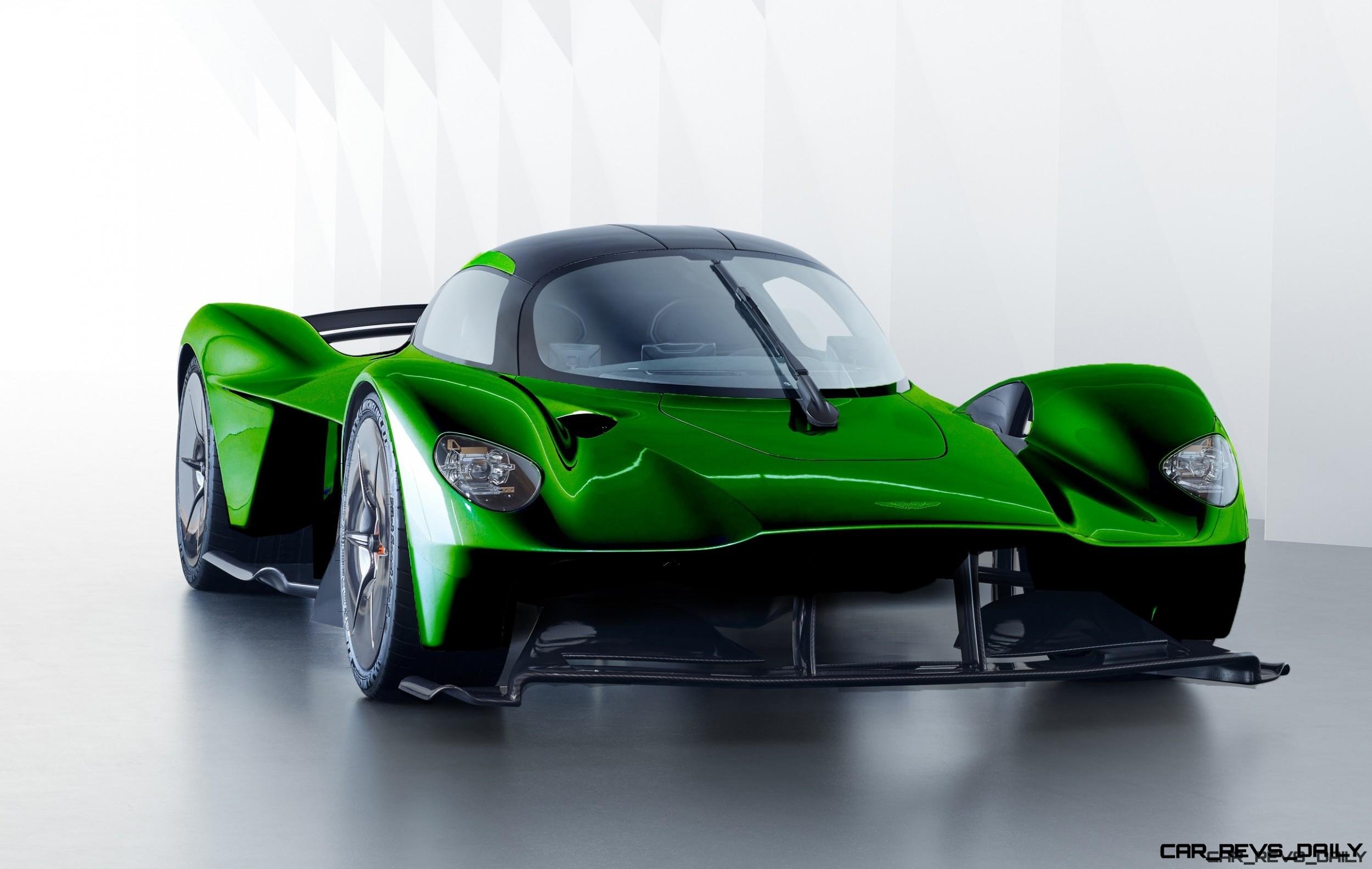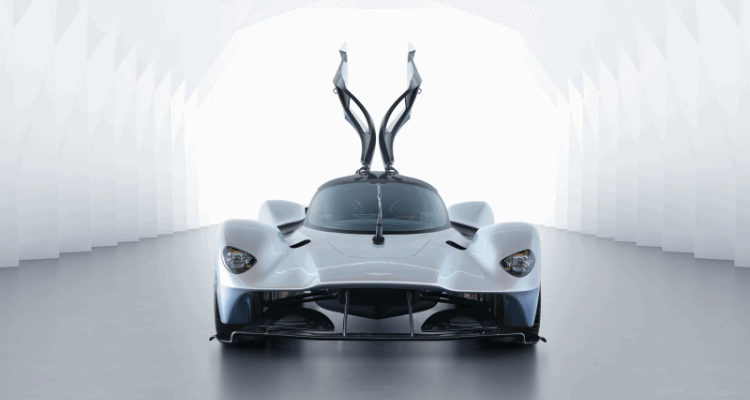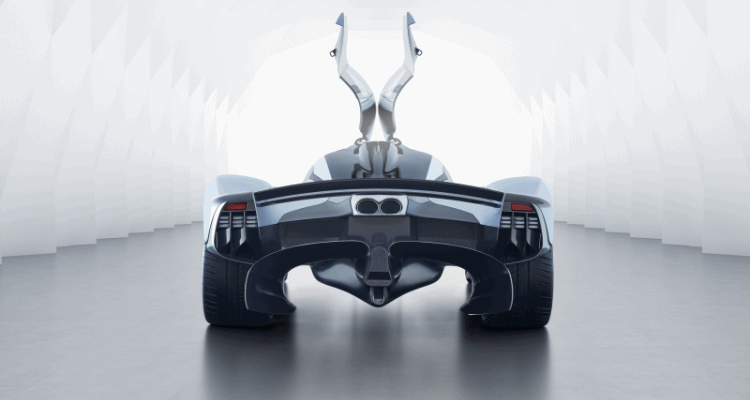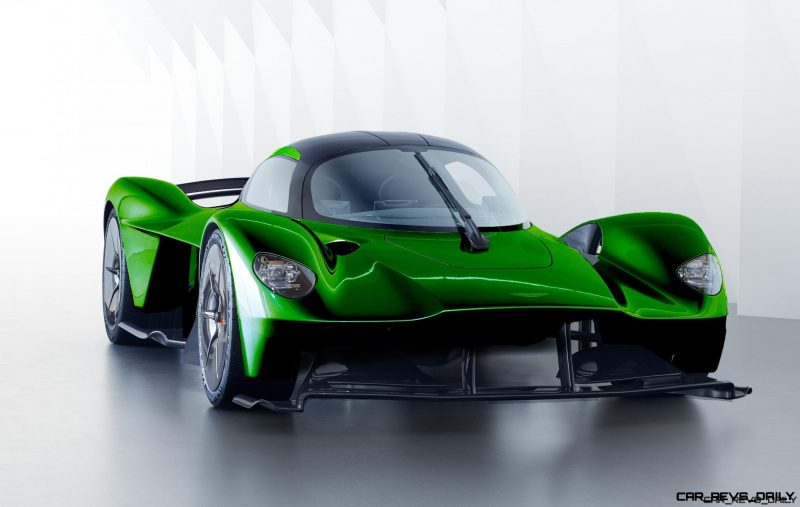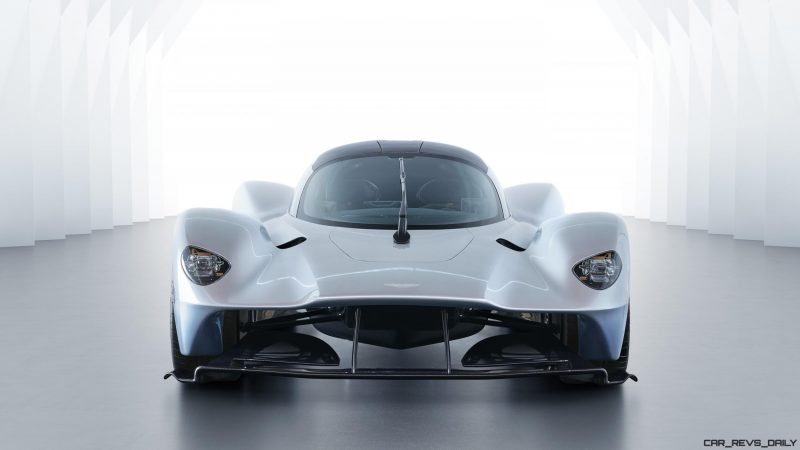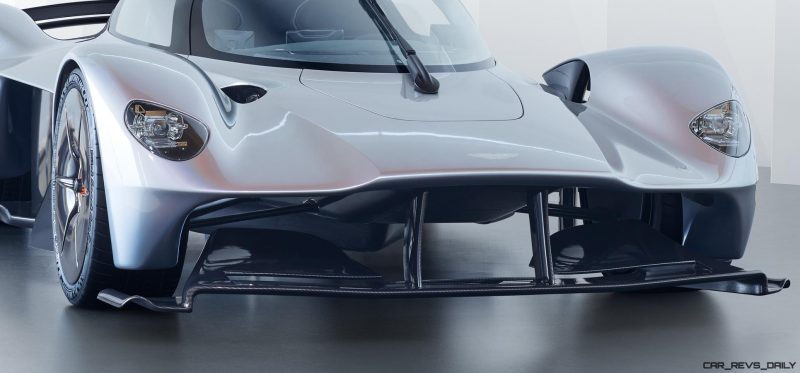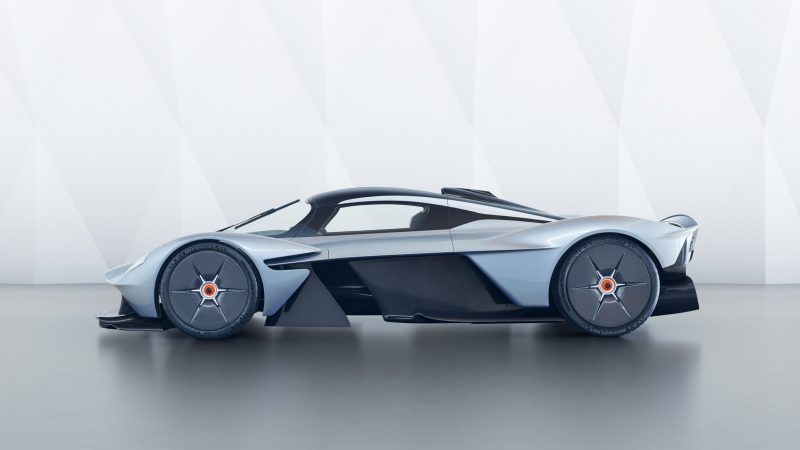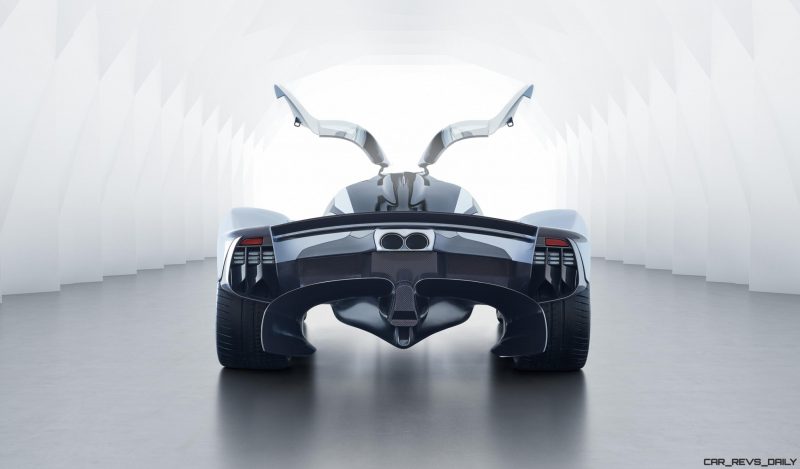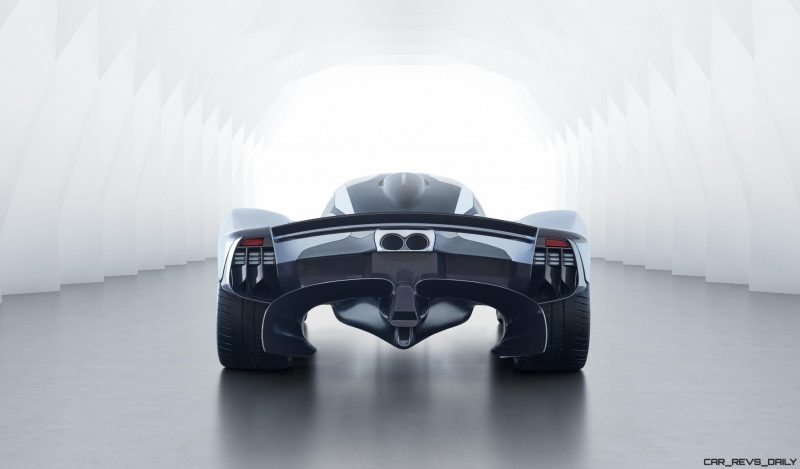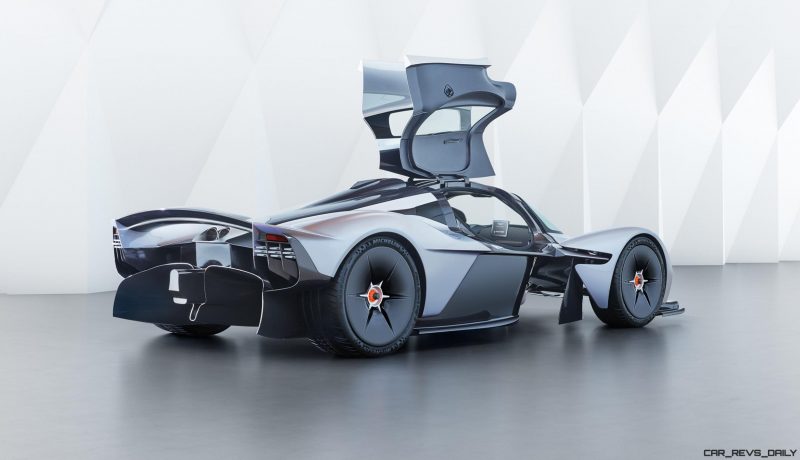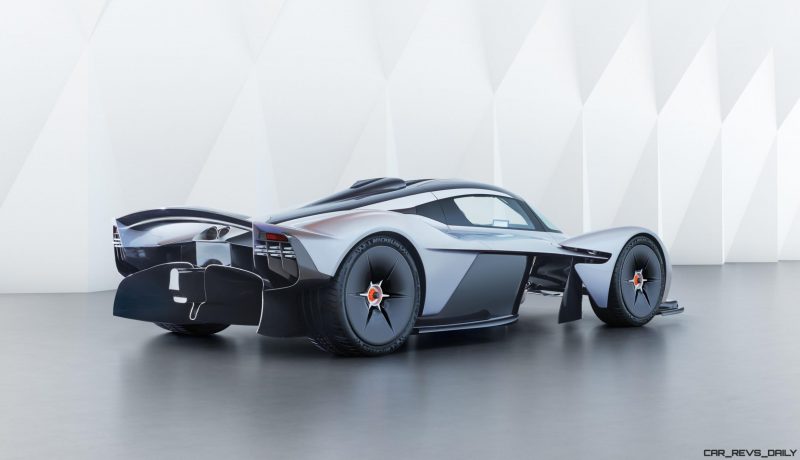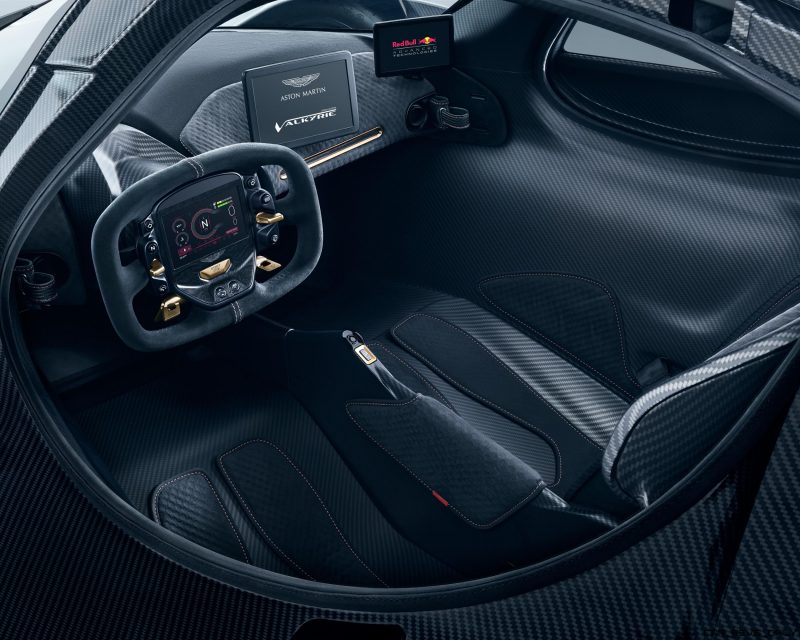Whisper it, but Aston is on a serious roll lately.
The launch sales of DB11 are strong and Vanquish is holding its own versus Bentley and Porsche. All two dozen copies of the halo 2016 Vulcan track star sold out in days, and the future of the DBX SUV is on track for arrival in summer 2018 to stores worldwide. From a brand new factory in Wales, of all places!
Sure, Rapide and Vantage are showing some age, but will be rejuvenated fairly soon with new AMG turbo powertrains.
And then we have this masterpiece. The collab with Red Bull Advanced Technologies gives Aston their first long exposure to an F1-level wind tunnel. All those hours of CFD have wrought something truly astounding. A road car with F1 performance. That is the goal.
Something far above what the class of 2015 hypercar trio were able to deliver. And something beyond even Pagani and Bugatti champions.
This Valkyrie gets more special the longer you have to appreciate its significance. Even in this image-based assessment — without considering the explosive mid-mounted engine’s characteristics — proves that Valkyrie is a name that will adore one of the fastest-cornering machines of all time. Its arrival is penciled for 2019/2020, though, so we have some time to appreciate the details in advance.
Here are six reasons the 2019 Valkyrie is next-level bonkers.
-
No front strikeface
Even the hypercars trio of 2016 all wore a similar full-width metal bumper insert – just like the most humble Kia’s in the world. This is generally though needed to pass crash testing, and particularly the IIHS offset test. These metal 2×4’s keep you safe, but create a wall for air rushing past.
Valkyrie goes the Huayra route with a sharp leading edge of the hood. This spear-shaped plane is fully functional for aero – channeling air upward and downward in a near 50-50 split.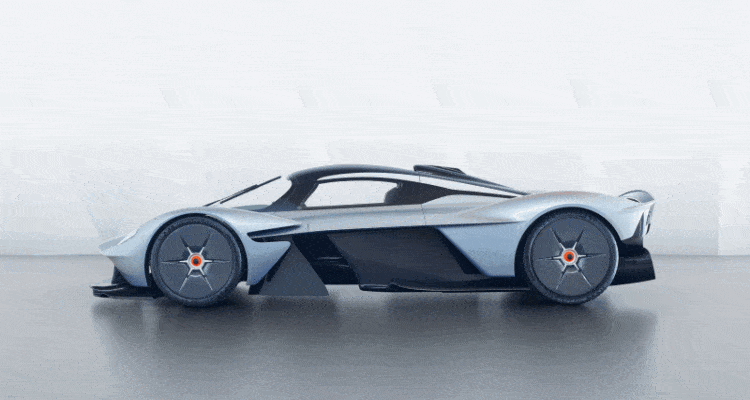
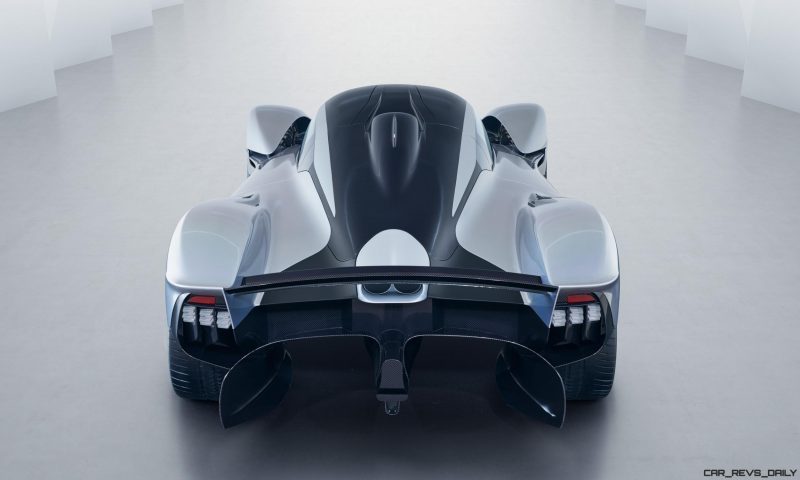
2. Floating fenders + closed wheels
Floating wheel wells are a direct bit of knowledge coming over from F1 to the hypercar business. There are multiple advantages: less bodywork is always lighter, opening the front bodywork allows for extreme air channels that amplify the downforce of the lower splitter. This free-standing splitter is better able to reduce drag, create downforce as well as shape the air via active spats.
The main wheels also lack typical spokes. These are generally needed to vent steel brakes, but create more turbulence than they are worth above 150-mph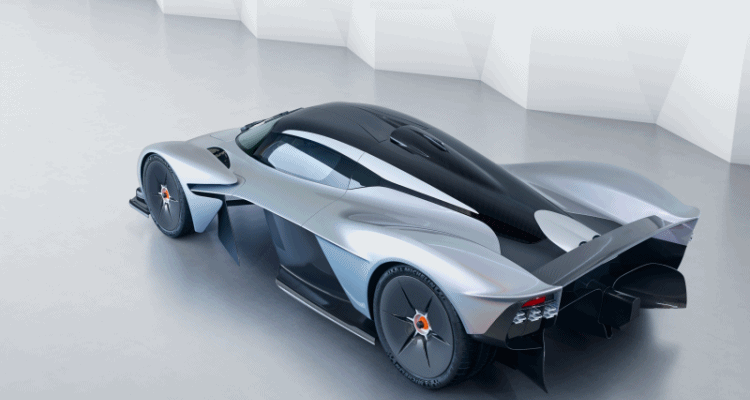
3. Ground-effect aero channels
The lack of front radiators entirely means all the air hitting the nose of the Valkyrie is instantly deflected outward. Past the front wheels and shot laterally via floating aero planes ahead of the gullwing doors.
These air channels up front are wild, sure, but the tail diffuser is even more extreme. By fluting and expanding the air outlet points, Red Bull Advanced Technologies and Aston Martin hope to create a vacuum vortex. Air exiting the gigantic diffuser is theoretically moving faster on exit than when it enters – sucking the car down to the pavement, even without a flat bottom typical of most racecars.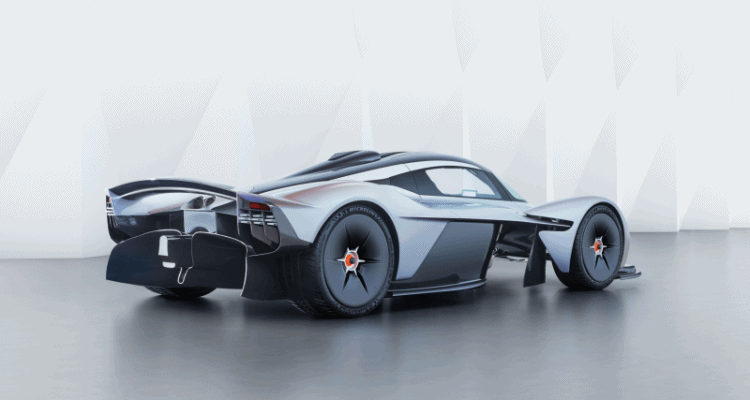
-
Upswept tub for driver + drivetrain
This single tub pokes out below the bodywork at the steering wheel point – but beyond that is a single piece bathtub. Extreme crash strength via fixed sills, and a wrapped engine compartment whose tub ends in a teardrop under the rear spoiler.
5. Legs-up F1 drive position
The teardrop tub only works because of the F1-like drive position. It is butt-down and legs up. Your legs shoot upward below the steering wheel and the shaped carbon “seats” have a default recline that is quite extreme. Once acclimated, this laid-back drive position better resists G-force fatigue over an endurance race, for example. Less overall lateral support is needed with this raked drive position, as well. Comfort and max driver size limitations are a reason more hypercars have not gone this route.
6. Knob-free dashboard with nearly all vehicle controls on steering wheel
The beautiful dashboard flows like a masterpiece in modern art. This dash is still part of the single passenger and power cell, so its swoops and shapes are functional for a chassis strength.
Touchpanel in the center is clean and simple, while camera-operated side mirror screens replace free-standing wing mirrors.
The race theme softens at the squircle steering wheel, which conveniently houses all controls inside its thick alcantara rim. This lessens the complexity of the dash wiring, and allows custom wheels for race applications versus the more lux road cars, if only to turn on the AC in the road version!
This is ultra-advanced aero and race tech for Aston’s next-gen flagship.
We hope they truly find a way to make the stunning Valkrie road legal, even in the USA.
2019 Aston Martin VALKYRIE

Tom Burkart is the founder and managing editor of Car-Revs-Daily.com, an innovative and rapidly-expanding automotive news magazine.
He holds a Journalism JBA degree from the University of Wisconsin – Madison. Tom currently resides in Charleston, South Carolina with his two amazing dogs, Drake and Tank.
Mr. Burkart is available for all questions and concerns by email Tom(at)car-revs-daily.com.

